
Mammillaria crucigera subs. tlalocii Photo by: Valentino Vallicelli
It is an attractive and rewarding cactus with dense white spines. The slow growth rate make it one of the most sought-after species.
Origin and Habitat: Mexico, (at the border of the states of Puebla and Oaxaca).
Habitat: Altitude 800 to 1.000 m.
Synonyms:
See all synonyms of Mammillaria crucigera
back
Accepted name in llifle Database:Mammillaria crucigera subs. tlalocii (Repp.) D.R.HuntMammillaria Postscripts 6: 9 (1997)Synonymy: 8
Accepted name in llifle Database:Mammillaria crucigera Mart.Hort. Reg. Monac. (1829) 127, nomen; Et: Mart. & Otto in Nova Acta Phys.-Med. Acad. Caes. Leop.-Carol. Nat. Cur. 16(1): 340. 1832Synonymy: 6
back
Common Names include:
ENGLISH: Owl Eye Cactus
Description: Mammillaria crucigeraSN|1840]]SN|1835]] subs. tlalocii best known in cultivation as Mammillaria tlalociiSN|1835]]SN|1840]] is a globular cactus, solitary or clumping dichotomously. In nature usually this species doesn't produce lateral shoots, but in cultivation are frequently seen plants that branch profusely from the base.
Stem: Fan shaped, forming brain shaped mounds up to 20 (or more) cm wide. The axil of tubercles is white-woolly.
Radial spines: 16 to 22, glassy white, 1 to 2 mm long, the longer sideways pointing.
Central spines: On the areoles at the apex of the plant, with age, may appear a single longer brown-black central spine 6-10 mm long.
Flowers: Carmine-pink, 12 to 14 mm long, 8 to 10 mm wide.
Flowering time: Blooms in late winter, early spring.
Fruits: Carmine-pink small.
Seeds: Small, brown.
Subspecies, varieties, forms and cultivars of plants belonging to the Mammillaria crucigera group
Notes: This is one of the Mammillaria commonly called "Owl Eye Cactus", known for dichotomous branching (forking or dividing into two parts). Although dichotomous branching is not a common occurrence in cacti in general, it happens for some reason in this particular species. What is interesting about this cactus is that it began as a single head, one head became two, and so on. Other Owl Eye Cactus among others comprise Mammillaria karwnskiana, Mammillaria formosaSN|15832]]SN|15832]], Mammillaria microthele and Mammillaria perbella.
Bibliography: Major references and further lectures.
1) Robert T. Craig “The Mammillaria handbook: with descriptions, illustrations, and key to the species of the genus Mammillaria of the Cactaceae” E P Publishing, 1945
2) John Pilbeam “Mammillaria The Cactus File Handbook” Cirio Pub. Services, 01/Dec/1999
3) Edward Anderson “The Cactus family” Timber Press, Incorporated, 2001
4) James Cullen, Sabina G. Knees, H. Suzanne Cubey "The European Garden Flora Flowering Plants: A Manual for the Identification of Plants Cultivated in Europe, Both Out-of-Doors and Under Glass" Cambridge University Press, 11/Aug/2011
5) David R Hunt; Nigel P Taylor; Graham Charles; International Cactaceae Systematics Group. "The New Cactus Lexicon" dh books, 2006
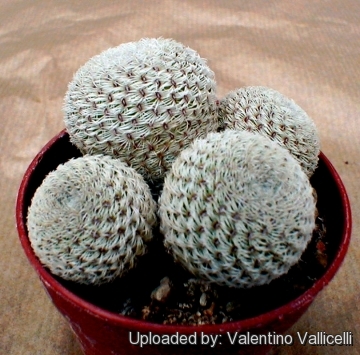 Mammillaria crucigera subs. tlalocii Photo by: Valentino Vallicelli
Mammillaria crucigera subs. tlalocii Photo by: Valentino Vallicelli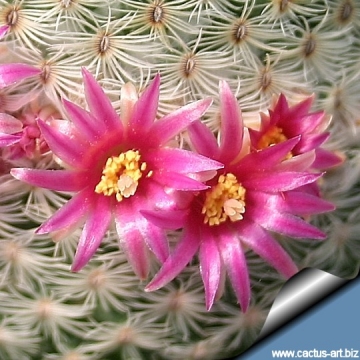 Mammillaria crucigera subs. tlalocii Photo by: Cactus Art
Mammillaria crucigera subs. tlalocii Photo by: Cactus Art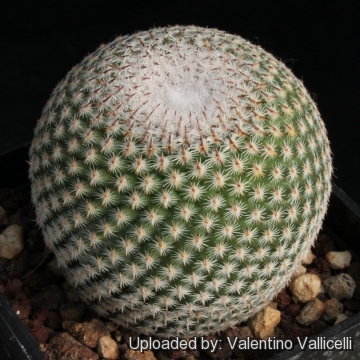 Mammillaria crucigera subs. tlalocii Photo by: Valentino Vallicelli
Mammillaria crucigera subs. tlalocii Photo by: Valentino Vallicelli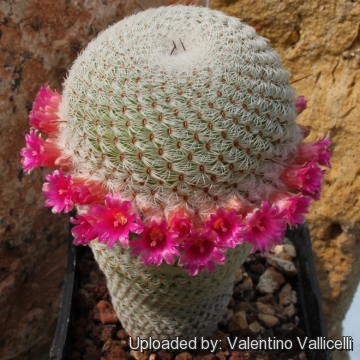 FO229 Conpuerta, Sierra Mixteca, border Oaxaca-Pueblo, Mexico Photo by: Valentino Vallicelli
FO229 Conpuerta, Sierra Mixteca, border Oaxaca-Pueblo, Mexico Photo by: Valentino Vallicelli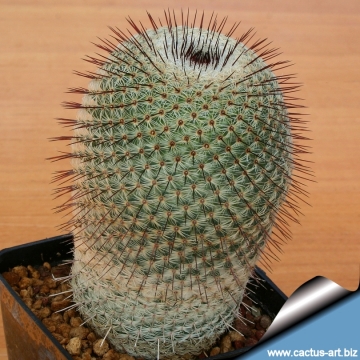 Mammillaria crucigera subs. tlalocii Photo by: Cactus Art
Mammillaria crucigera subs. tlalocii Photo by: Cactus Art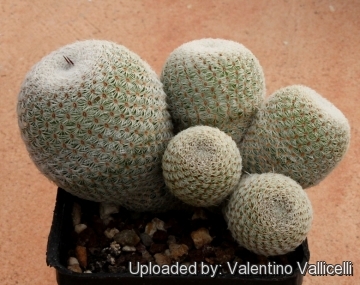 Mammillaria crucigera subs. tlalocii Photo by: Valentino Vallicelli
Mammillaria crucigera subs. tlalocii Photo by: Valentino Vallicelli Mammillaria crucigera subs. tlalocii Photo by: Valentino Vallicelli
Mammillaria crucigera subs. tlalocii Photo by: Valentino Vallicelli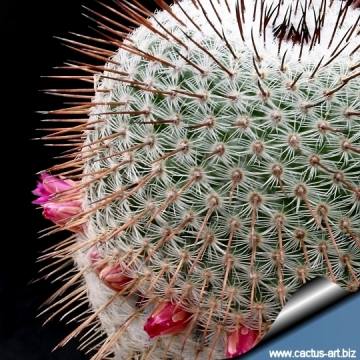 Mammillaria crucigera subs. tlalocii Photo by: Cactus Art
Mammillaria crucigera subs. tlalocii Photo by: Cactus ArtCultivation and Propagation: It is a slow growing species . Use pot with good drainage and a very porous mineral-based potting mix, keep dry in winter. Pot plants are quite wet-sensitively. Care must be taken with watering (Rot prone) and needs good drainage. Water sparingly during the growing season, keep very dry in winter. Feed with a high potassium fertilizer in summer.
Usually it is recommended to overwinter this plant in a bright and warm greenhouse with at least 8-10° C , but it proved to be quite frost resistant (if kept dry it hardy as low as -5° C)Outside full sun or afternoon shade, inside needs bright light, and some direct sun.
Some plants will offset readily, and clumps can be produced in a very few years.
Propagation: Direct sow after last frost, cuttings or grafting.
Your Photos
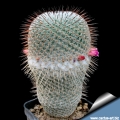
by Cactus Art
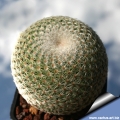
by Cactus Art
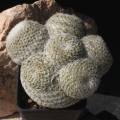
by Valentino Vallicelli





















